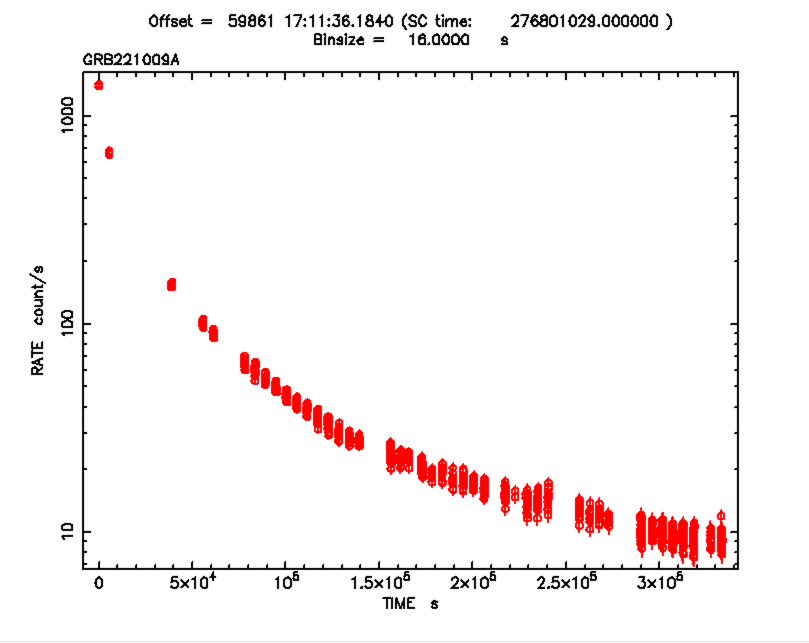NICER / ISS Science Nugget
for October 13, 2022
OHMAN Alerts NICER to an Unprecedented Celestial Explosion
Among the most energetic, fleeting, and mysterious events in the universe are gamma-ray bursts (GRBs), unpredictable and never-repeated explosions. Believed to be triggered by the death of a massive star, its core likely collapsing to a black hole, a typical GRB in a distant galaxy is visible to our telescopes as a blast of gamma rays, followed by a rapidly fading "afterglow" in X-ray and visible light.
At 13:16:59 UT on Sunday, October 9, NASA's Fermi observatory discovered a suddenly brightening new source of gamma rays, the brightest transient ever detected with its Gamma-ray Burst Monitor (GBM) instrument. Nearly an hour later, both NASA's Swift observatory and JAXA's MAXI payload on ISS detected the same source, now already beginning to fade, as it came into view of their instruments. The Orbiting High-energy Monitor Alert Network (OHMAN) payload on ISS alerted NICER to MAXI's finding; NICER's first opportunity to observe was 3 hours (two orbits) later, and NICER has continued to monitor the afterglow's decay (see Figure), providing uniquely sensitive spectroscopic information and the capability to seek out rapid variability signatures. Preliminary NICER results were reported by W. Iwakiri and collaborators in Astronomer's Telegram #15664.
This unique event has captivated astronomers around the world: it is simultaneously the closest GRB detected in over 55 years of gamma-ray astronomy, and among the most energetic and luminous yet. Gamma-ray and X-ray emission continue to be detectable days after the initial explosion, which is unprecedented and promises to yield new insights into the explosion mechanism, the nature of the surrounding medium, and the birth of a black hole in the dying throes of a massive star.

Figure:
The rate of X-ray photon detections with NICER, accumulated in 16-second intervals and plotted on a logarithmic scale, from the gamma-ray burst Swift J1913.1+1946, or GRB 221009A. The first measurement was made 4 hours after the explosion was recorded by other NASA assets, and the fading "afterglow" should remain
<< Previous
Main Index
Next >>